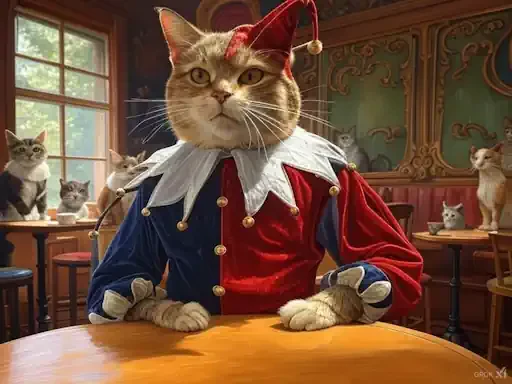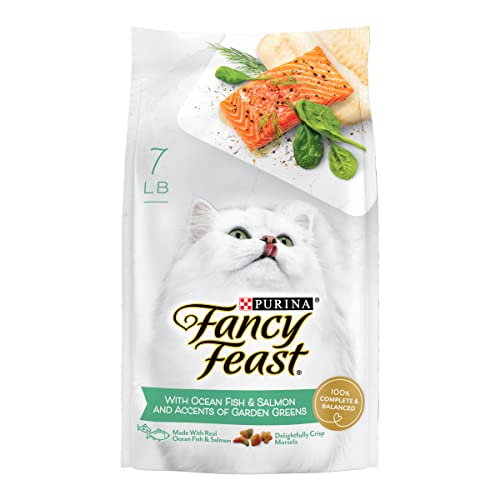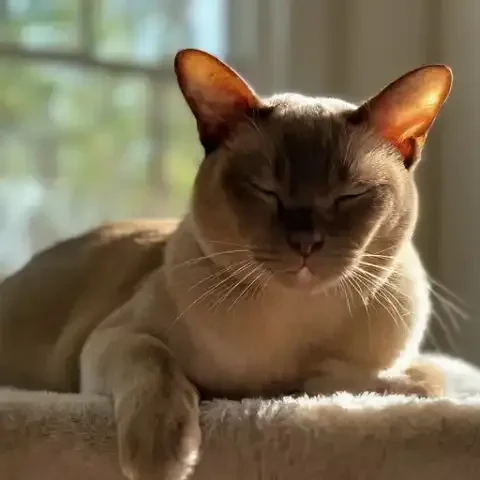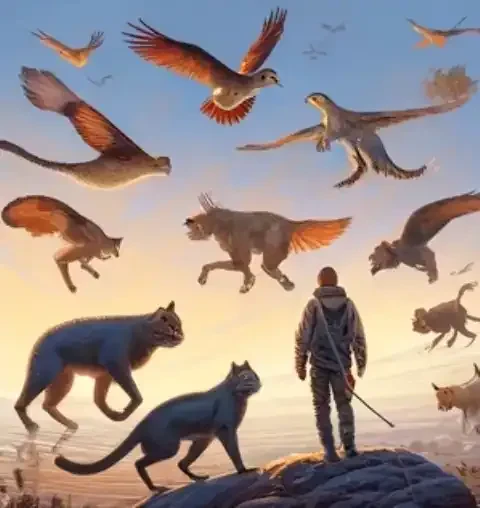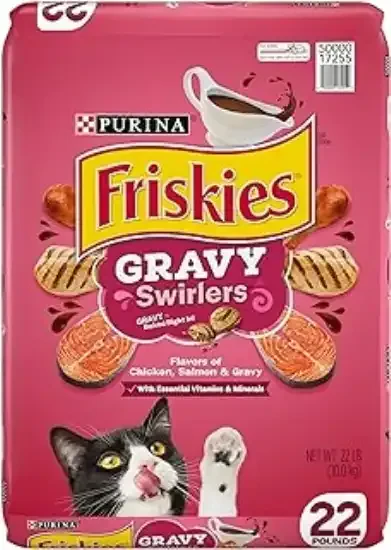From the dawn of civilization to the vibrant, ever-evolving digital canvases of today, the cat has prowled with quiet grace through the realm of art, a constant and captivating muse. More than just a subject, the feline form has served as a potent symbol, a creature embodying qualities that resonate deeply with the human spirit and ignite the creative fire in artists across cultures and throughout the long sweep of history.
But what is it about cats, these enigmatic creatures that share our homes yet retain an air of untamed wildness, that has so consistently captured the artistic imagination? Is it their undeniable grace, the fluid lines of their bodies in motion or repose? Is it the alluring mystery that seems to shimmer in their eyes, hinting at an inner world we can only glimpse? Or is it simply their sheer, undeniable feline charm, the comforting weight of a purring presence, the playful flick of a tail, the quiet companionship that enriches our lives? Let us embark on a journey to explore the enduring inspiration of cats in art, tracing their paw prints through masterpieces and movements, uncovering the qualities that artists have celebrated, and understanding why the feline muse continues to reign supreme.
Imagine the regal presence of Bastet, the ancient Egyptian goddess, rendered in vibrant frescoes, her feline form imbued with divine power and serene grace. Picture the playful energy of cats leaping and pouncing in delicate Japanese woodblock prints, capturing fleeting moments of feline dynamism. Envision the enigmatic gaze of countless cats immortalized by painters and sculptors across centuries, each depiction a unique interpretation of feline personality and mystique. The story of art, in its vast and diverse tapestry, is undeniably interwoven with the feline form, a thread of constant fascination and creative exploration. This article will delve into the multifaceted ways cats have inspired art, traversing artistic periods and cultural landscapes to reveal the enduring appeal of the feline muse. We will explore the ancient origins of cat art, the visual representations across painting, sculpture and photography, the literary lions and purr-suasive prose inspired by felines, and even touch upon their influence in other art forms. Ultimately, we will seek to understand the enduring allure, the reasons why cats, in their multifaceted charm, continue to ignite the artistic imagination and hold their place as one of art’s most beloved and consistently inspiring subjects.
To understand the deep-rooted connection between cats and art, we must first journey back to ancient echoes, exploring the dawn of feline representation in the earliest expressions of human creativity. Ancient Egypt, a civilization that revered the natural world and imbued animals with profound spiritual significance, provides the fertile ground from which feline art first truly blossomed. In ancient Egyptian society, cats were far more than mere domestic companions; they were elevated to a sacred status, often worshipped as deities and deeply integrated into the religious and cultural fabric of life. Bastet, perhaps the most iconic feline deity, reigned supreme as the goddess of protection, home, hearth, fertility, and childbirth. Represented as a woman with the head of a cat, or sometimes fully as a feline, Bastet embodied grace, domesticity, and a fierce protective energy, becoming a central figure in the Egyptian pantheon and a powerful symbol of feline divinity. Other deities, like Sekhmet, the lion-headed goddess of war and healing, further highlighted the potent symbolism and revered status of felines within ancient Egyptian belief systems.
This profound reverence for cats naturally translated into artistic expression. Ancient Egyptian art is replete with depictions of felines, adorning frescoes, sculptures, and a vast array of everyday objects. Statues of Bastet, crafted from bronze, stone, and precious materials, stand as testaments to her worshipped status, embodying regal feline grace and divine power. Frescoes adorning tomb walls and temple interiors depict cats in both domestic and symbolic contexts, showcasing their integration into daily life and their connection to the spiritual realm. Beyond monumental sculptures and temple art, feline motifs permeated everyday objects. Jewelry, cosmetic containers, amulets, and decorative elements on furniture and pottery frequently featured stylized cat forms, reflecting their pervasive presence and symbolic importance in all aspects of Egyptian life. The symbolism embedded within these depictions is rich and multifaceted. Cats in ancient Egyptian art represented not only divine power and protection, particularly through Bastet, but also concepts of domesticity, grace, fertility, and good fortune. Their poised and elegant forms conveyed a sense of inherent majesty and serene power, while their association with the home and family underscored their role as protectors and benevolent spirits within the domestic sphere. These ancient echoes, resonating from the art of Egypt, establish a powerful precedent, revealing the earliest artistic impulse to capture and celebrate the feline form, imbuing it with symbolic weight and artistic reverence that would resonate through centuries to come.
While ancient Egypt stands as the undeniable dawn of feline-centric art, feline motifs, though less central and overtly religious, can be found in other ancient cultures as well. In ancient Greece and Rome, cats, while not elevated to divine status, gradually found their place within art, often depicted as domestic companions or imbued with symbolic associations of independence and grace. Statues, mosaics, and pottery from these periods occasionally feature cats, often in domestic scenes or as attributes of certain deities, showcasing their growing familiarity and integration into everyday life, albeit within a less overtly symbolic framework than in Egypt. Similarly, in early Asian art, from India to Persia, feline depictions began to emerge, often showcasing the beginnings of a more naturalistic or decorative approach to feline representation. Early Indian and Persian art might depict lions and other large cats, symbols of royalty and power, while domestic cats, though less frequent, might appear in decorative motifs or early examples of animal portraiture, marking the nascent stages of a broader artistic appreciation for the feline form that would continue to evolve across diverse cultures and artistic traditions.
Moving forward through art history, we enter the visual canvas, exploring the rich and varied representations of cats in painting, sculpture, and photography, mediums that allowed for increasingly nuanced and individualized depictions of felines. During the Renaissance and Baroque periods in Western art, cats began a more distinct, though initially subtle, emergence into the artistic landscape. While not yet central subjects, cats started to appear, often subtly included as elements within larger compositions. Domestic scenes, portraits of wealthy individuals, and even allegorical works occasionally incorporated cats, often as symbolic details adding layers of meaning or enhancing the atmosphere of the painting. Early examples can be found in the works of artists like Albrecht Dürer, whose engravings sometimes featured cats as background elements, and in certain Italian Renaissance paintings where a feline presence might subtly allude to domesticity, luxury, or even a hint of the enigmatic within otherwise formal portraits. During this period, the symbolic roles of cats in art began to evolve. While echoes of ancient symbolism, particularly associations with mystery and independence, might still linger, cats also began to represent more contemporary concepts like domestic comfort, refined taste, and the quiet luxury associated with pet ownership among the affluent classes.
The 18th and 19th centuries witnessed a significant shift, bringing cats into the artistic foreground with increasing prominence. The rise of genre painting, with its focus on depicting everyday life and domestic scenes, provided fertile ground for feline subjects to flourish. Cats were no longer relegated to subtle background details; they became central figures within paintings depicting domestic interiors, playful interactions with children, and moments of quiet domesticity, reflecting the growing sentimental value placed on pets and the increasing acceptance of cats as cherished members of the household. This era also saw the emergence of artists who began to specialize in animal portraits, including cats. Painters dedicated their artistic talents to capturing the individual personalities, breeds, and unique beauty of felines, moving beyond purely symbolic or generic representations to celebrate the distinct character of each animal. Artists like Gottfried Mind, known as the "cat Raphael" for his naive yet charming depictions of cats, Eugène Delacroix, who captured the dynamic energy of felines in his sketches and paintings, and Théophile Steinlen, whose iconic Art Nouveau posters often featured sleek and stylized black cats, all contributed to the growing prominence of cats as subjects in visual art. Their diverse styles and approaches – from naive charm to romantic dynamism to stylized elegance – showcased the multifaceted appeal of cats as artistic subjects and cemented their place within the broader canon of Western art.
The 20th century and beyond ushered in modern and contemporary feline visions, reflecting the diverse styles and evolving themes of modern art movements. Cats were interpreted through the lenses of various modernist movements. Expressionism, with its focus on emotional intensity and subjective experience, sometimes portrayed cats in distorted, emotionally charged forms, reflecting anxieties or inner states. Surrealism, with its exploration of dreams, the subconscious, and the illogical, embraced the enigmatic and mysterious nature of cats, depicting them in dreamlike or symbolic scenarios, often playing on their perceived otherworldliness. The advent of photography and, later, digital art, provided entirely new mediums for feline representation, opening up fresh creative possibilities. Photography allowed for capturing feline realism with unprecedented detail, documenting their movements, expressions, and individual personalities with a new level of immediacy. Digital art expanded the creative palette even further, allowing artists to manipulate feline imagery, create fantastical feline forms, and explore new visual styles and narratives centered around cats. Contemporary artists continue to find endless inspiration in cats, exploring diverse styles and themes. From hyperrealist paintings that capture every whisker and fur detail to abstract feline forms that explore shape and color, and pop art-inspired feline portraits that celebrate their iconic status, contemporary cat art demonstrates the enduring and ever-evolving artistic fascination with the feline form, ensuring its continued presence on the visual canvas of the 21st century and beyond.
Beyond the visual arts, cats have also profoundly inspired the world of literature and poetry, prowling through prose and verse, lending their enigmatic charm and symbolic weight to countless narratives and lyrical expressions. Cats’ presence in literature can be traced back to the rich wellspring of folklore and fables, traditions deeply rooted in oral storytelling and cultural transmission. In folklore, cats often appear as trickster figures, embodying a mischievous and independent spirit. Folktales from around the world feature cats who outsmart larger, stronger creatures, navigate complex situations with cunning intelligence, or embody moral lessons through their actions and interactions with humans and other animals. Examples can be found in diverse cultural traditions, from European folktales featuring clever feline tricksters to Asian folklore where cats might possess magical abilities or serve as messengers between worlds. These folkloric roots, deeply ingrained in cultural narratives, likely influenced later literary depictions of cats, establishing a foundation for their portrayal as complex, independent, and often enigmatic characters within written stories.
In poetry, cats have become potent symbols and evocative metaphors, inspiring verses that range from heartfelt elegies to whimsical and playful rhymes. Poets have long been drawn to the symbolic potential of cats, using them to represent a diverse array of abstract concepts. Grace, mystery, independence, sensuality, domesticity, and even a touch of the darker, more enigmatic aspects of nature – all have been explored through the feline lens in poetic form. Examples abound across poetic traditions. Charles Baudelaire, the French Symbolist poet, famously explored the darker, more mysterious aspects of feline nature in poems like "Le Chat," imbuing cats with an air of aloof beauty and enigmatic allure. T.S. Eliot, in his whimsical "Old Possum's Book of Practical Cats," celebrated the diverse personalities and quirky charm of felines through playful, character-driven verses. Even within the concise and evocative form of Japanese Haiku, cats have found their poetic voice, capturing fleeting moments of feline grace, stillness, or sudden bursts of playful energy. The emotional range evoked by cats in poetry is equally diverse, spanning from deep affection and admiration to explorations of their enigmatic beauty and even darker, more symbolic interpretations, reflecting the multifaceted nature of the human-feline bond and the rich symbolic potential cats offer to poetic expression.
In prose and novels, cats have stepped into the spotlight as fully realized characters, driving plots, offering companionship, and embodying specific themes across diverse literary genres. Cats often appear as protagonists or significant supporting characters, shaping narratives and adding unique feline perspectives to storytelling. From detective cats solving mysteries with feline intuition to magical cats guiding characters through fantastical realms, and comforting feline companions offering solace and unconditional love, cats inhabit a wide spectrum of literary roles. They have found their niche in diverse genres, enriching mystery novels with their keen observational skills, adding a touch of magic and enchantment to fantasy literature, offering comforting companionship and heartwarming narratives in children's books and domestic dramas, and even injecting humor and satire into comedic prose. Authors like T.S. Eliot, whose "Old Possum's Book of Practical Cats" blurred the lines between poetry and prose, creating memorable feline characters, Saki (H.H. Munro), known for his witty and often darkly humorous short stories that occasionally featured cats in sardonic roles, and countless contemporary authors who have penned novels centered around feline protagonists or feline-human relationships, all contribute to the rich and ever-growing literary landscape populated by captivating feline characters.
Beyond the traditional realms of canvas and page, cats have also lent their inspiration to other diverse art forms, leaving their paw prints on sculpture, music, performance, and film. In sculpture and ceramics, cats have continued to inspire artists beyond ancient Egyptian statuary, finding form in modern and contemporary three-dimensional art. From stylized ceramic cat figurines to more abstract sculptural interpretations of feline form and movement, cats have been rendered in diverse materials and artistic styles, showcasing their enduring appeal as sculptural subjects. Even the world of music has felt the feline influence. Composers have, on occasion, drawn inspiration from cats, perhaps most famously exemplified by the "Duet for Two Cats" often attributed to Rossini (though its actual origins are debated) or the cat-inspired scene in Stravinsky's opera "The Love for Three Oranges." While less prevalent than visual or literary representations, these musical nods to felines demonstrate their subtle but persistent presence even in the auditory arts. If one stretches the definition of art form somewhat, one might even consider the abstract and interpretive possibilities of cats inspiring dance or performance art, exploring feline movement, grace, and enigmatic presence through the medium of human embodiment and artistic expression, though concrete examples might be more elusive. And of course, cats have become ubiquitous in film and animation, their visual storytelling potential fully realized in countless animated cat characters and feline roles in live-action films. From iconic cartoon cats like Felix the Cat and Tom from Tom and Jerry, to more nuanced and complex feline characters in animated features and live-action family films, cats have proven to be visually compelling and narratively versatile subjects, enriching the world of cinematic storytelling with their unique feline charm and dramatic potential.
But what is this enduring allure that keeps artists returning to the feline form, generation after generation? Why do cats continue to inspire such a diverse and prolific body of art across so many different mediums? The answer, it seems, lies in a potent combination of factors, encompassing their inherent aesthetic qualities, their enigmatic nature, and the deep emotional resonance they hold for humans. Aesthetically, cats possess undeniable grace, beauty, and a captivating physical form that naturally lends itself to artistic representation. Their elegant movement and posture, whether in a slow, deliberate stalk or a sudden burst of playful energy, provide a constant source of visual inspiration. The fluid lines of their bodies, the sinuous curve of their spine, the poised stillness of their resting forms – all are inherently aesthetically pleasing and visually captivating. The sheer variety of cat breeds and appearances further expands their artistic appeal. From the sleek lines of a Siamese to the fluffy grandeur of a Persian, from the diverse array of coat colours and patterns to the captivating spectrum of feline eye colours, cats offer a rich and varied visual palette for artists to explore, capturing diverse forms, textures, and visual nuances. Even the textural qualities of cat fur itself, and the way light plays across their coats, catching highlights and shadows, provides endless visual interest for painters, sculptors, and photographers seeking to capture the subtle details of feline form and presence.
Beyond their purely aesthetic qualities, cats possess an enigmatic nature that continues to fascinate and inspire artistic exploration. Their perceived inscrutability, their often mysterious demeanor, and their air of independence have long intrigued humans and fueled artistic interpretations. The "inscrutable" gaze of a cat, those captivating eyes that seem to hold untold secrets, has drawn artists to capture their enigmatic expression, attempting to unravel the mystery that seems to lie behind their feline gaze. Their independent nature, their self-reliance, and their seemingly untamed spirit, even within the domestic sphere, resonate with human desires for freedom and autonomy, making them potent symbols for artists exploring themes of independence and self-determination. This inherent tension between the domestic cat and its wild ancestry, the untamed spirit lurking beneath the purring companion, provides a constant source of artistic intrigue, a reminder of the untamed wildness that still exists even within the comforts of domesticity, a duality that artists have explored and celebrated across countless works. Finally, and perhaps most profoundly, the enduring allure of cats as artistic muses stems from their deep emotional resonance and the powerful human-cat bond. The profound emotional connection humans form with cats, the unconditional affection, the comforting companionship, and the unique interspecies bond they share, provide endless inspiration for artists seeking to explore themes of love, companionship, and the emotional complexities of human-animal relationships. Depictions of cats offering comfort, solace, or simply a quiet, loving presence in art resonate deeply with human experiences of companionship and emotional well-being, reflecting the profound role cats play in our lives as sources of comfort and unconditional love. And ultimately, the broader human love for pets in general, the deep emotional connections we form with animals, and the universal desire to celebrate and immortalize these beloved companions through art ensures that cats, and indeed all animals that touch our hearts, will continue to inspire artists across generations, leaving behind a rich and ever-evolving legacy of art born from love, admiration, and the enduring magic of the animal-human bond.
In conclusion, from ancient deities to contemporary masterpieces, cats have left an undeniable paw print on the world of art, their presence woven into the very fabric of human creativity across millennia and diverse cultures. We have traced their journey from revered figures in ancient Egyptian art to prominent subjects in Renaissance paintings, from central characters in literature to inspirations in sculpture, music, and film, revealing the breadth and longevity of their artistic influence. The enduring allure of cats as muses stems from a multifaceted appeal: their inherent aesthetic beauty, their enigmatic nature that sparks curiosity and interpretation, and the deep emotional connections they foster with humans, inspiring themes of love, companionship, and comfort. While artistic styles and cultural interpretations of cats have evolved across time and mediums, their power to captivate the creative eye remains constant. Their grace, their mystery, and their undeniable charm continue to inspire artists across mediums and generations, ensuring that the feline muse will continue to prowl through the creative landscape for centuries to come, leaving behind an unending masterpiece of art inspired by cats, a legacy as enduring and enigmatic as the creatures themselves.
